If you love Pickled Beetroot, I will show you how easy it is to make your own, and customise the flavours to suit your taste. We use a quick pickling method that transforms earthy beetroot into a full of flavour condiment that is slightly sweet, slightly tangy and a little bit spicy. It's a vibrant, full flavoured condiment that will enhance many dishes.
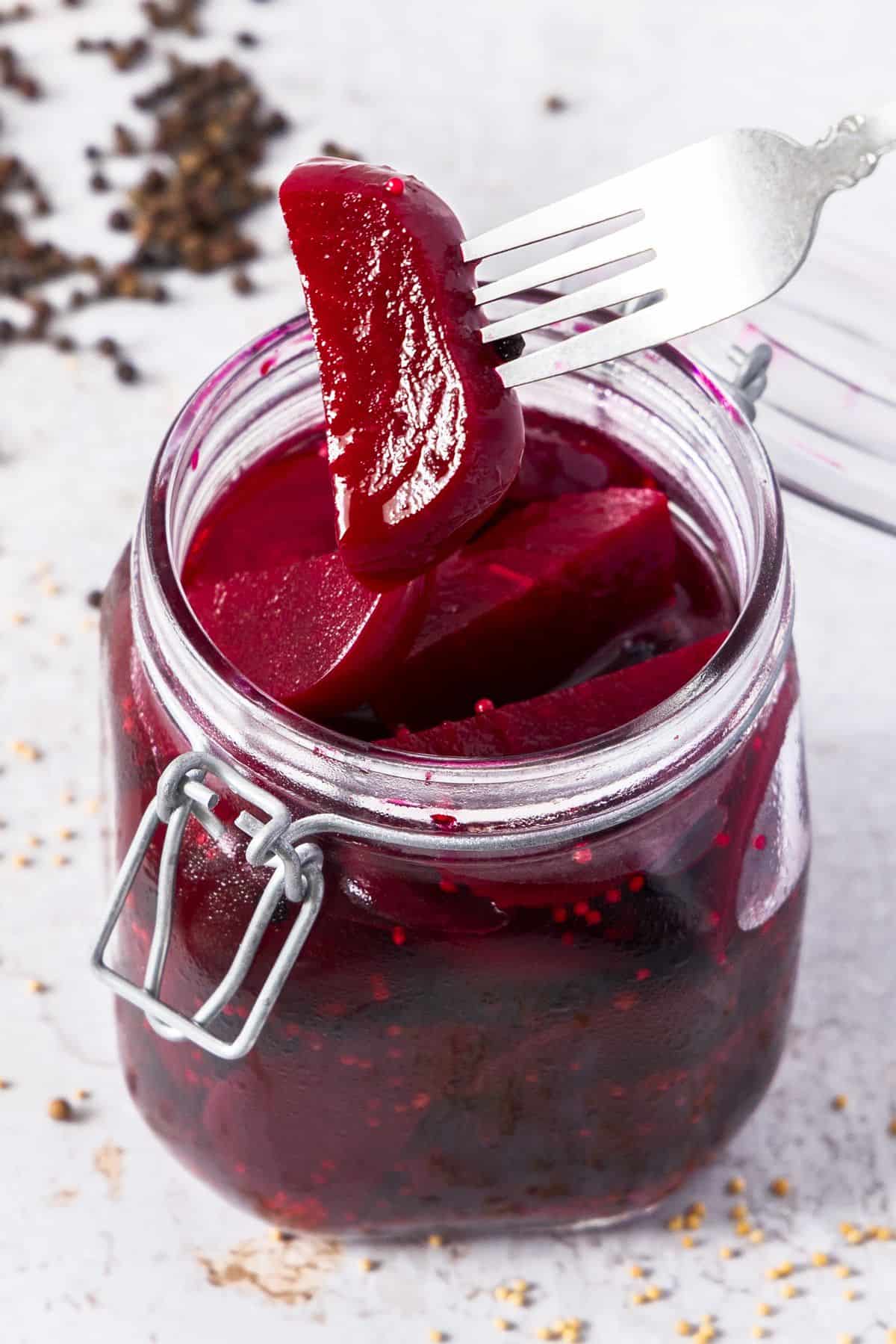
Why You'll Love This Recipe:
- They are a great way to add colour, flavour and texture to the food on your table. And the best part is, there are no artificial additives, the colour is naturally derived.
- Pickling is a simple process and a great way to preserve beetroot to enjoy in the months ahead.
- If you have not previously made pickles, this is a great place to start. It is a simple pickle, ideal for the novice or experienced cook alike.
- When you make Pickled Beetroot yourself, you have the satisfaction of enjoying your own produce and knowing exactly what the pickles contain.
- Make a jar for a friend. Just tie a pretty ribbon around a jar; they make a great edible gift.
- It is an easy way to transform this humble vegetable into a flavoursome condiment.
- You will find many ways in which to enjoy this pickle.
Recipe Inspiration: just another homemade condiment that we always have on hand as a family. We love the flavour from roasting the beetroot. Inspired by my Nana's recipe (which also happens to be my Mum's favourite pickle!) but scaled back slightly as her batch made an enormous amount at one time! On that note, feel free to double or triple the recipe if needed 🙂
Ingredients and Substitutions:
Please see the recipe card further along in the post for exact quantities of ingredients and the full method.

- Beetroot - although they come in a variety of colours, we have used the one most often seen, a deep purple. It is simple to cook them, we give advice in our recipe for How to Roast Beetroot. Also known as red beet, garden beet or beet, this is a versatile, nutritious root vegetable. You can use them cooked or raw, in sweet or savoury dishes, served hot or cold. They belong to the same family as Swiss Chard and Spinach, and the beet leaves can be used in a similar manner. Take care when handling the beets as they will stain your fingers, clothes or any porous material.
- Sea salt - we use coarse cooking salt, not table salt as it is finely textured and may make the brine too salty.
- White vinegar - we use white vinegar with an acidity of 5% for this pickle, but you can use white wine vinegar or apple cider vinegar if you prefer.
- Water - we use filtered water to reduce the sharpness of the brine. Avoid water that contains chlorine as it can alter the taste of the pickles.
- Sugar - regular granulated sugar helps to preserve the pickles and balances the flavours. Caster/superfine sugar is also fine to use.
- Yellow mustard seeds - add crunch and flavour to the pickling brine. You can use brown mustard seeds if you prefer.
- Black peppercorns - add gentle spice and flavour.
- Chilli flakes - add a little heat that works well with these Pickled Beetroot. Eliminate or add more, according to your preference.
Variations:
Spices - you can vary the spices to suit your taste. For instance, coriander seeds, whole cloves or half a cinnamon stick are great options.
White vinegar - if you prefer, you can use white wine vinegar or apple cider vinegar.
Mustard seeds - we have used yellow mustard seeds, but you can use brown if you prefer. The yellow seeds are milder, and the brown spicier.
How To Make Pickled Beetroot:
Please see the recipe card further along in the post for exact quantities of ingredients and the full method.
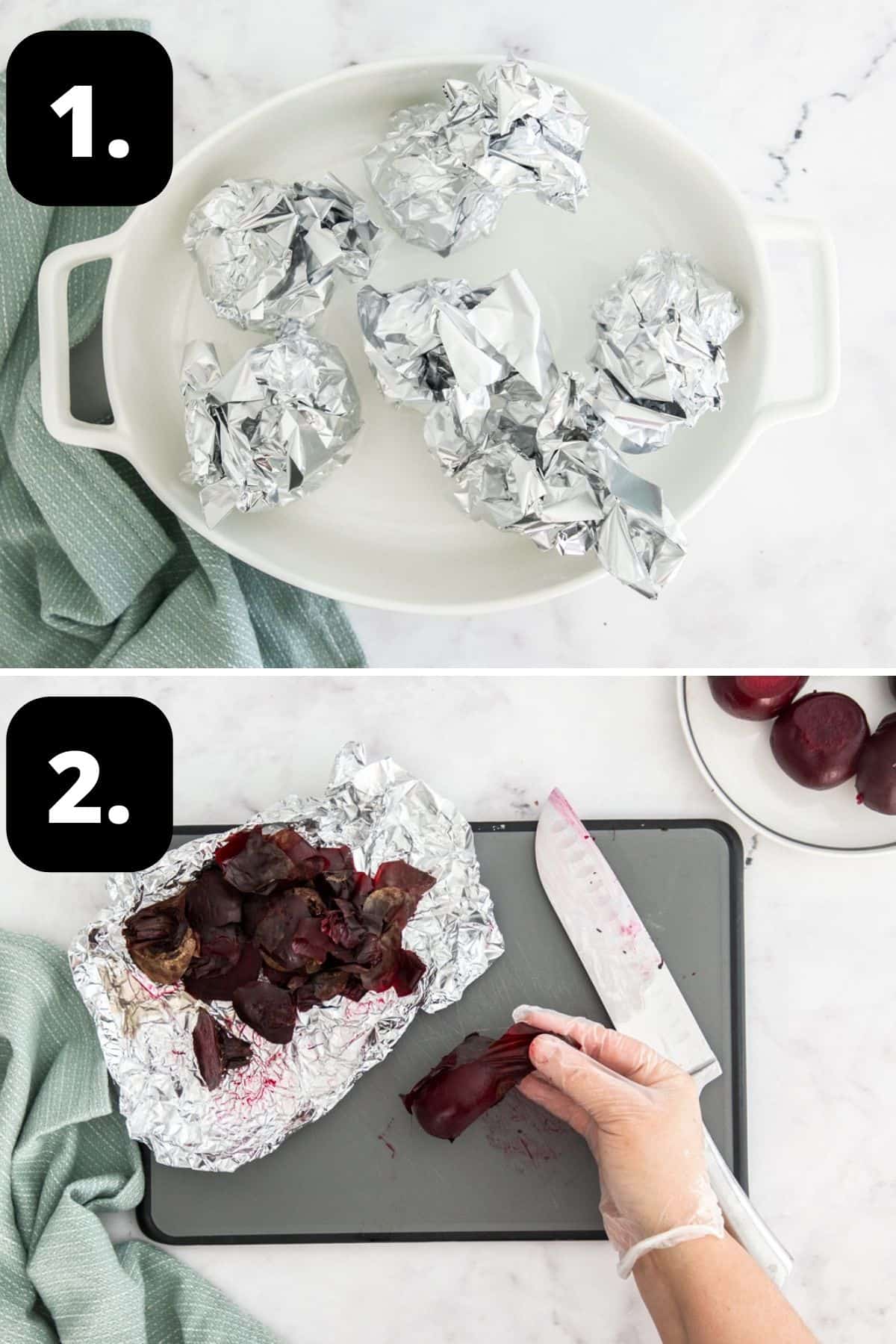
1 - Roast the beetroot:
Wash the beetroot then wrap loosely, individually, in aluminium foil.
Place in a baking dish and roast for 45 minutes, or until a skewer slides easily into the flesh. Set them aside until they are cool enough to handle.
2 - Peel the beetroot:
Trim the stem and root end and rub the skin away with a paper towel or peel with your fingers.
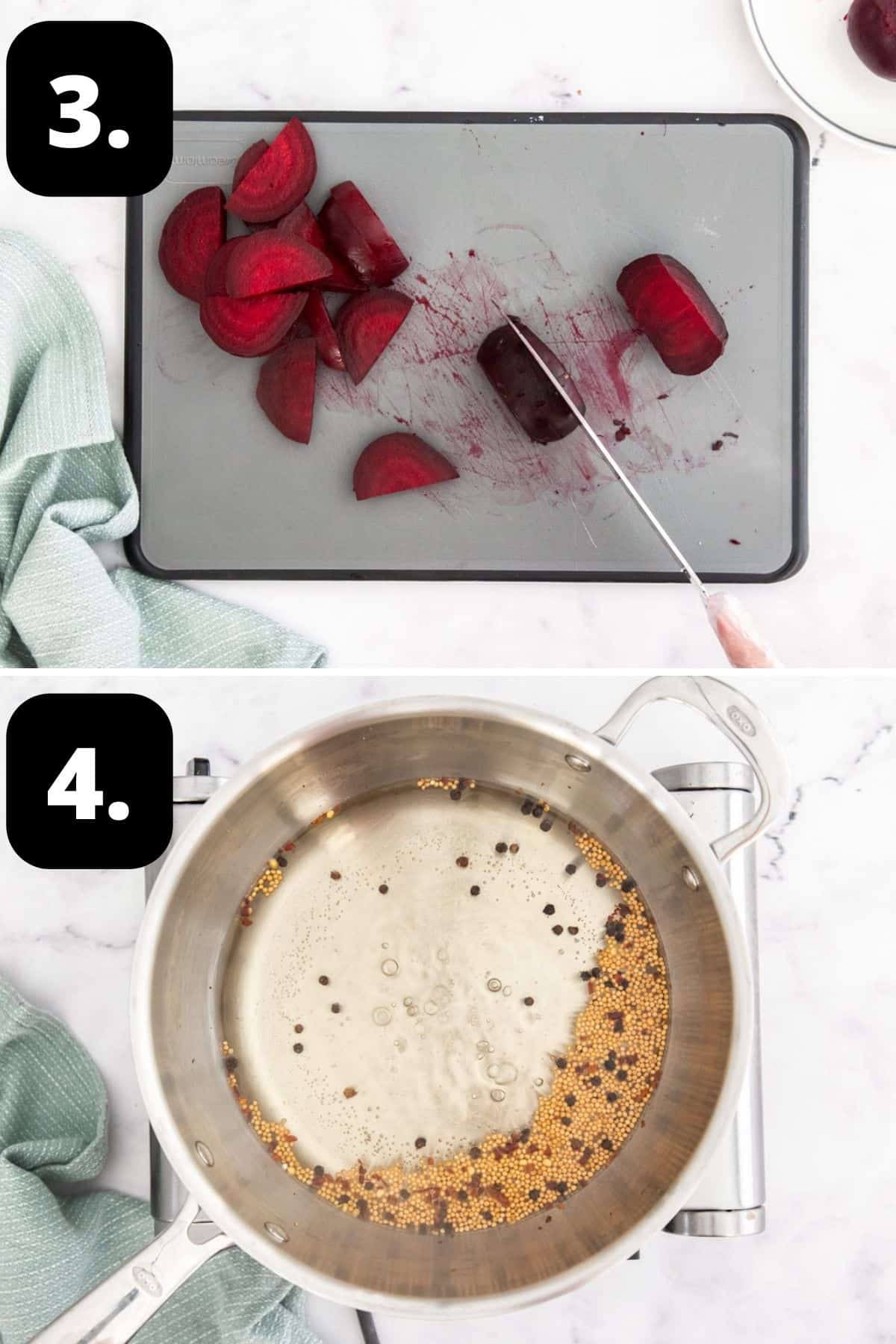
3 - Cut the beetroot:
Slice the beetroot in half and then cut into half-moons.
4 - Prepare your pickling brine:
In a non-reactive pan, add the vinegar, water sugar and seasonings and on medium heat, stir to dissolve the sugar. Once dissolved, simmer for 2 minutes.
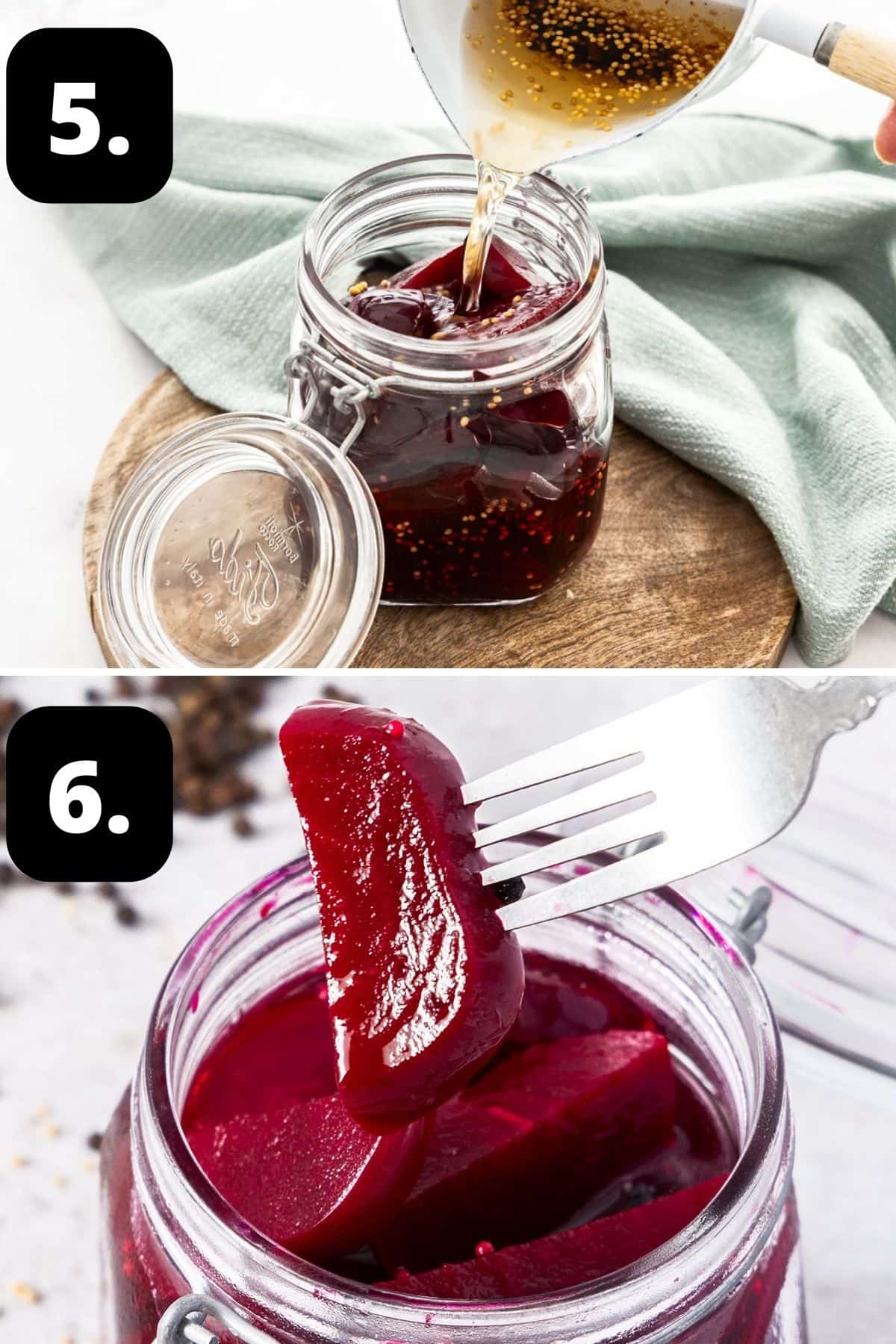
5 - Add to your jars:
Add the beetroot to a warm, sterilised jar, and carefully top with the vinegar mixture.
Seal the jars immediately and cool on the bench before refrigerating.
6 - Allow the flavours to develop:
The Pickled Beetroot can be enjoyed once cooled, but it is best to leave it for 24-48 hours to allow the flavours to develop.
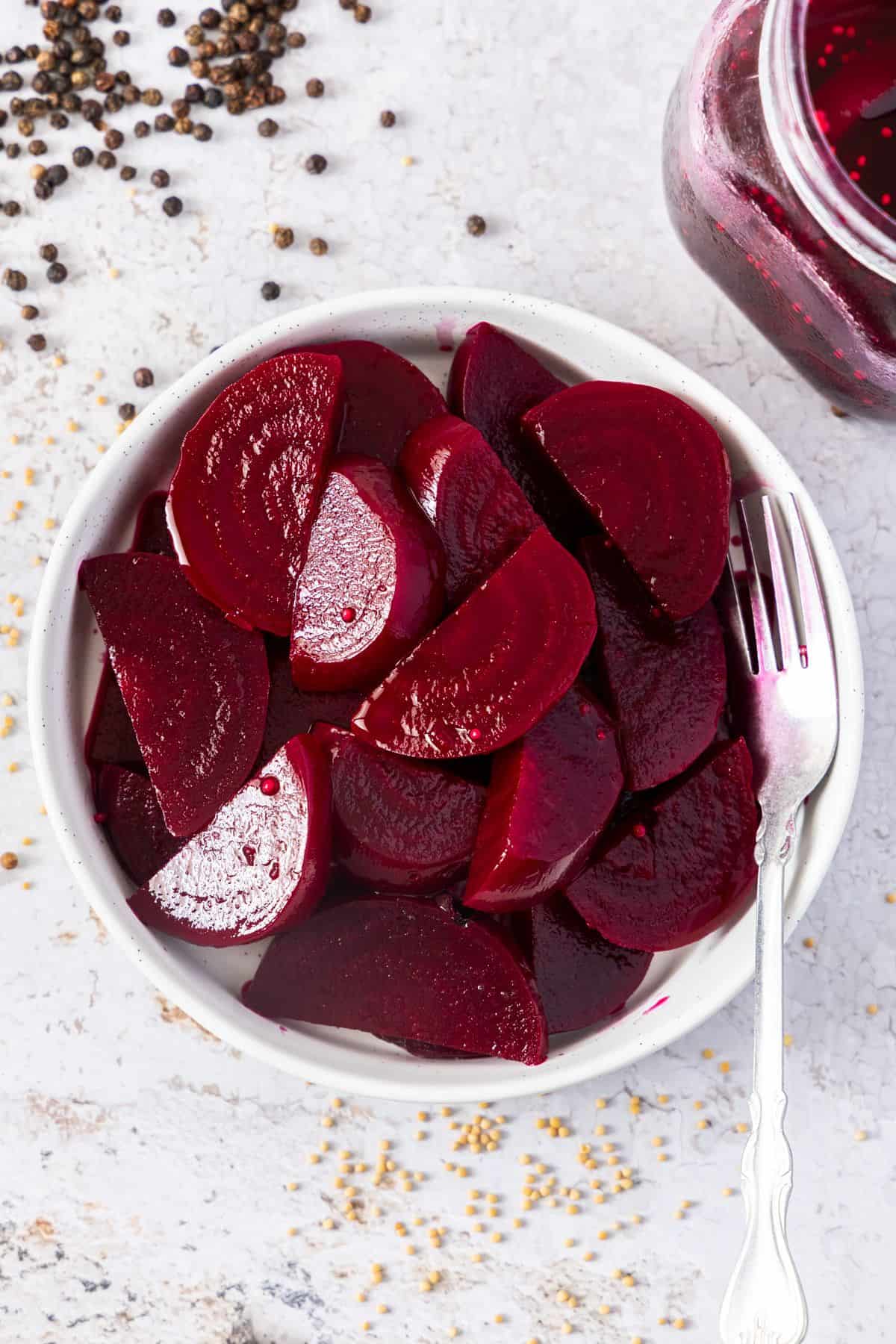
Tips for Success, Storage and FAQs:
The pickle will last for two months when stored in the fridge. Always use clean utensils when removing pickles.
For the best result, I recommend that you cook them before peeling. Leaving the peel on means they retain more of their colour and nutrients. The peel slips off easily after they are cooked.
Whilst it is quick and easy to boil them, this tends to drain away a lot of colour, and consequently, flavour and nutrients. My preference is to roast them.
This is a matter of personal preference. I chose to cut my beets into half-moons and then in half again. However, you could cut them into wedges, discs, or batons.
Top Tip:
When selecting beetroot, choose those that are small and firm with deep coloring and unblemished skin. Large beetroot are likely to be tough and woody.
My preference is to purchase a bunch with the leaves attached. They are a good indicator of age and should be bright green and not wilting. And this way, you get two veg for the price of one as the leaves can be used in the same manner as Swiss Chard or Spinach. The leaves have a slightly bitter taste whereas the bulb has a sweet, earthy flavour.
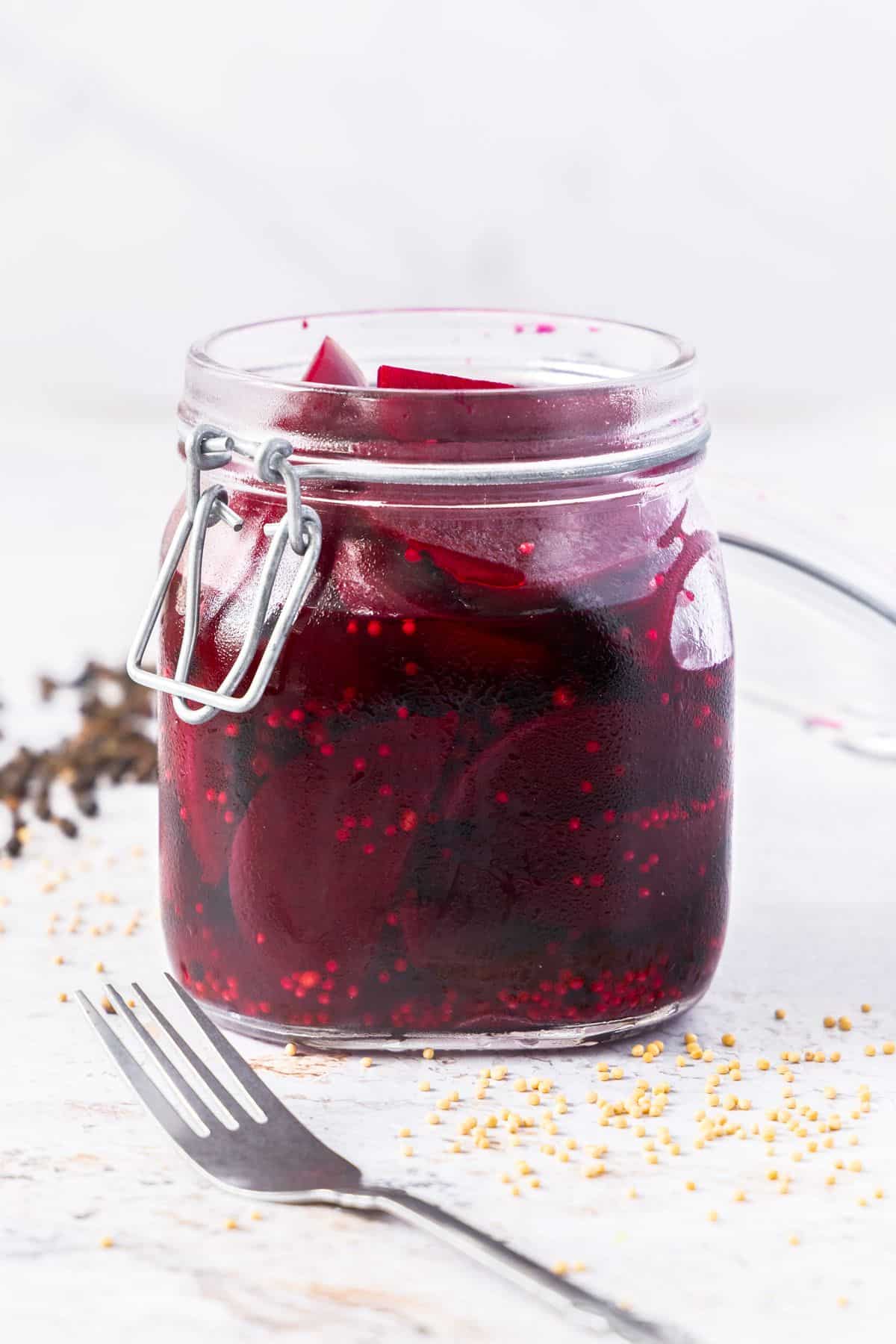
Serving Suggestions:
You will find many ways to enjoy this Pickled Beetroot. Some of our favourite ways are:
- Added to a grazing board.
- As a vibrant condiment with grilled meats, cold meats, or burgers.
- To accompany a selection of cheeses.
- Added to green salads for a pop of colour and crisp texture or try my Beetroot and Goat Cheese Salad.
- In a sandwich for additional flavour and texture.
- They are a lovely edible gift.
I hope you will love the flavour boost that our delicious Pickled Beetroot adds to so many dishes. Let me know in the comments below when you have tried them!
Alex xx
More Delicious Recipes For You To Try:
Stay in touch!
Follow me on Facebook, Pinterest, Flipboard and Instagram and subscribe to my newsletter.
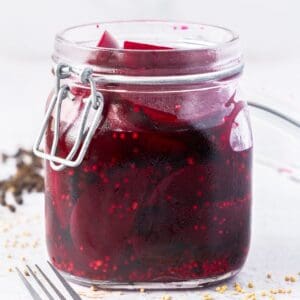
Pickled Beetroot
Equipment
- 1 x 800ml (27 fluid oz) Jar
Please note:
For accuracy, when weights are provided, we recommend weighing your ingredients. This will produce the best results. All oven temperatures listed are for fan forced.
Ingredients
- 650 g (23 oz) beetroot - prepared weight once trimmed. Smaller beetroot is better - roughly 4-5 small beetroot. See Note 1
- 2 teaspoon coarse sea salt See Note 2
- ¾ cup (180 ml) white vinegar See Note 3
- ¾ cup (180 ml) filtered water See Note 4
- ¼ cup (60 g) sugar
- 2 teaspoon whole yellow mustard seeds
- 1 teaspoon whole black peppercorns
- ¼ teaspoon red chilli pepper flakes
Instructions
Roast the Beetroot:
- Preheat your oven to 200 degrees C (390 F).
- Trim any leaves from the beetroot, leaving about 2.5 cm (1 inch) of stems on the beetroot.
- Wash the beetroot and wrap loosely, individually, in aluminium foil. Place in a baking dish to catch any juices which may leak. Roast for 45 minutes, or until a skewer slides easily into the flesh. Set them aside to cool in the foil until they are cool enough to handle.
To Sterilise the Jars:
- Lower the oven to 130 Degrees C (270 F) and place the jars in the oven for 15-20 minutes. Keep the jars warm.Sterilise the jar or jars you'll be using to store the pickles. Choose glass jars with an airtight, metal lid and ensure they have been washed by hand in hot soapy water then rinsed well. Check that the metal lids do not have rubber inserts - if they do, allow them to air dry, instead of placing in the oven.
For the Pickled Beetroot:
- Trim the stem and root end and rub the skin away with a paper towel or peel with your fingers. (This will be easier to do when the beetroot are still slightly warm.) Discard the stem, root and peel.
- Slice the beetroot in half and then cut into half-moons, about 1 cm (0.4") thick.
- In a non-reactive saucepan (See Note 5), place the vinegar, water, sugar and seasonings.On a medium heat, stir to dissolve the sugar. Once the sugar is dissolved, simmer the liquid for 2 minutes.
- Add the beetroot slices into the warm, sterilised jar.
- Remove the saucepan from the heat, and carefully pour the pickling liquid into the jar with the beetroot.
- Seal the jar immediately, and allow to cool on the bench before placing in the refrigerator. The Pickled Beetroot can be enjoyed once cool, but I recommend leaving them for 24-48 hours to allow the flavours to develop.
Notes
- Beetroot: we prefer smaller beetroot for this recipe. Larger beetroot can often be tough and woody.
- Coarse sea salt: ensure you use cooking salt or coarse sea salt. Regular table salt may contain anti-caking agents and is much stronger.
- Vinegar: I have used white vinegar that is 5% in acidity. You can also use apple cider or white wine vinegar - just ensure the acidity level is 5%.
- Water: ensure you use filtered water, as water that contains chlorine can alter the taste of the pickles.
- Non-reactive saucepans: are those which are ceramic, stainless steel, glass or enamelled cookware. Copper, iron and aluminium pans are reactive. Acidic foods, such as lemons and vinegar, may take on a metallic taste and discolour if cooked in such pans.
- Storage: once the jars have cooled, store the pickles in the fridge for up to two months. This is a quick pickle recipe not designed for long term canning.
- Nutritional information: is based on the entire jar, and includes the pickling liquid.
Nutrition Estimate:
Nutritional Disclaimer:
The nutritional information is an estimate only, and is derived from online calculators. For accurate results, we recommend calculating the nutritional information based on the ingredients and brands you use.


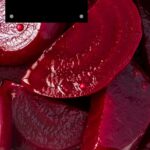
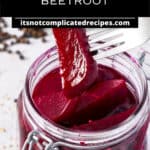
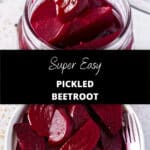
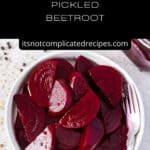

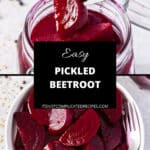
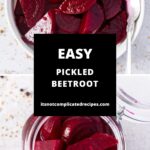
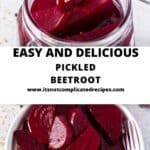

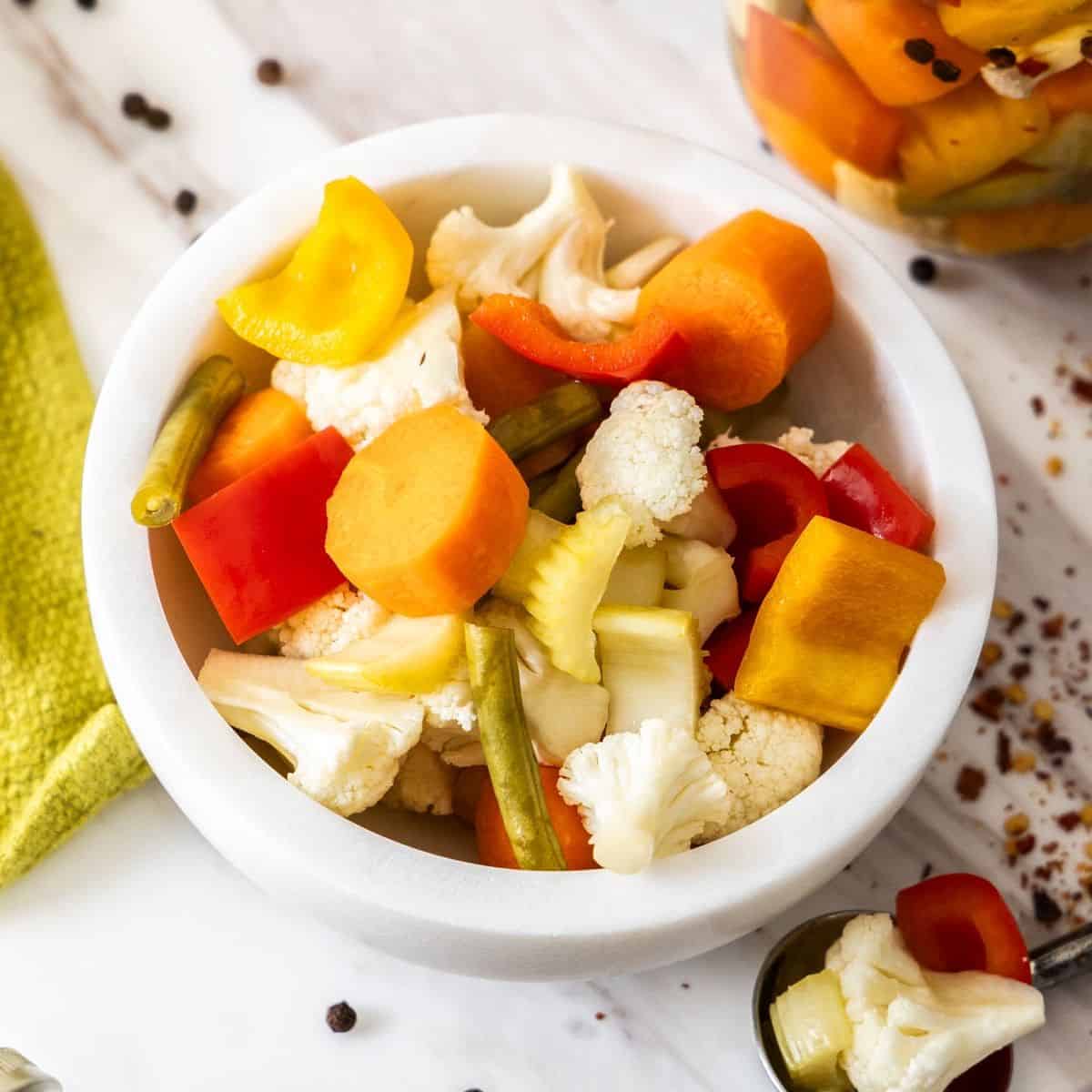
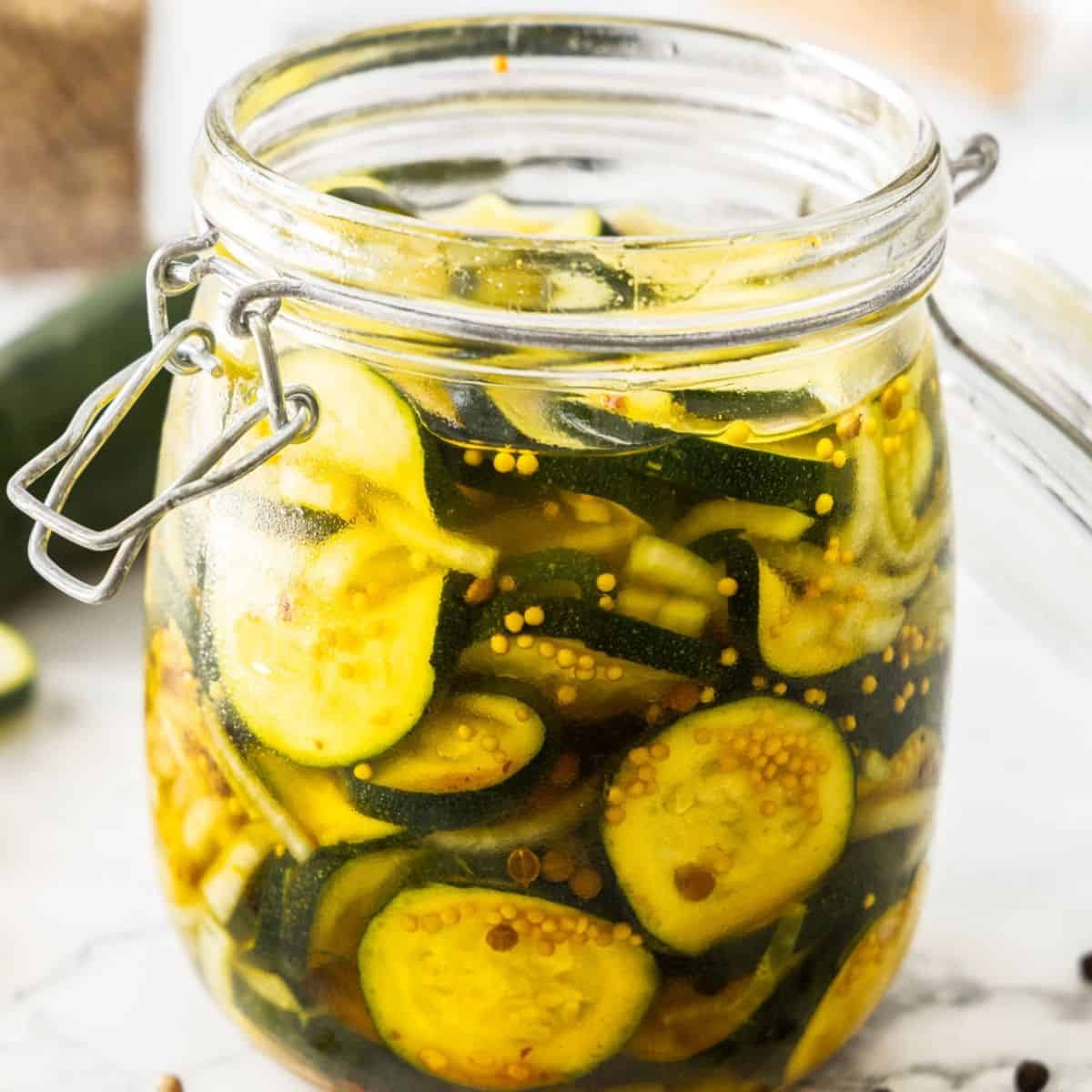
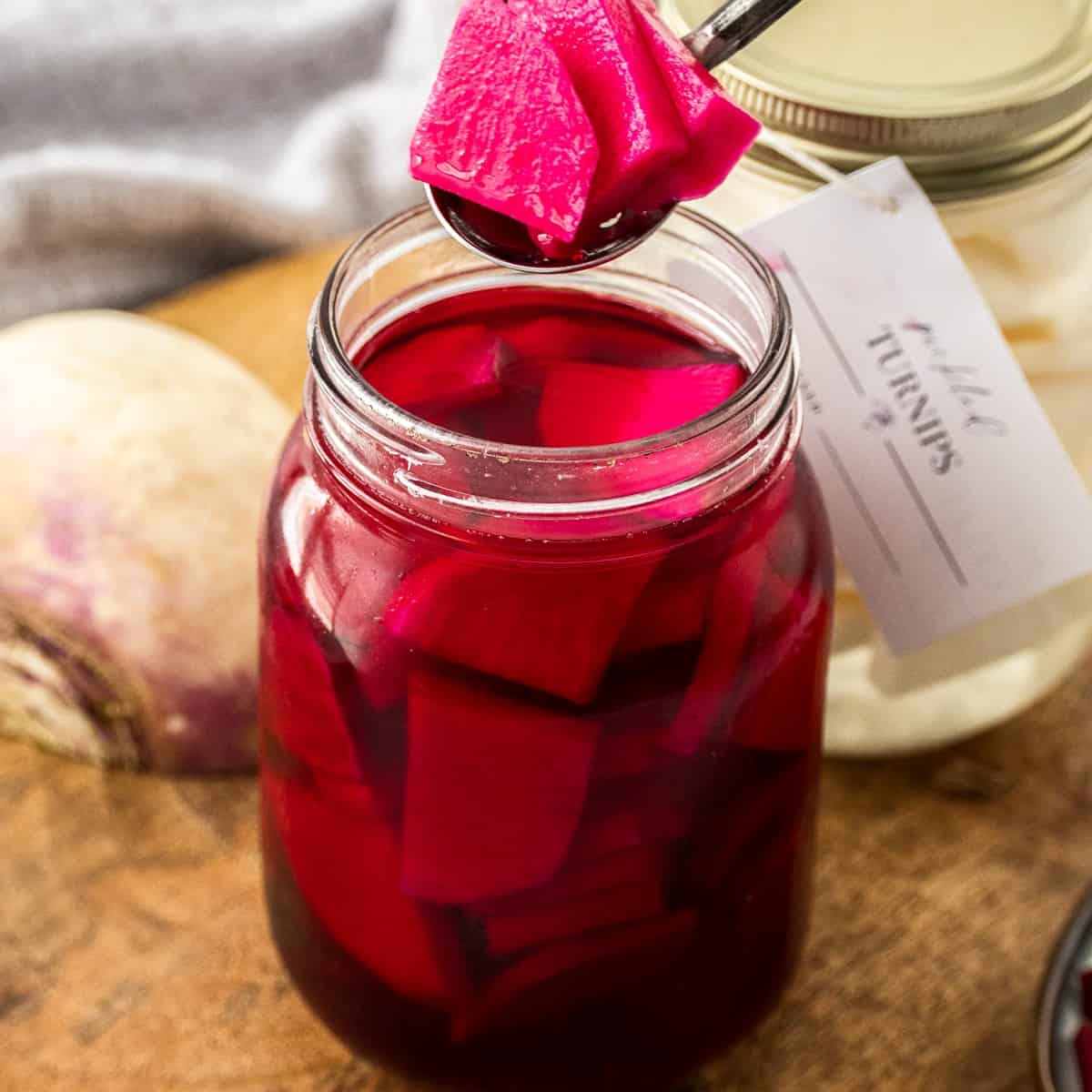
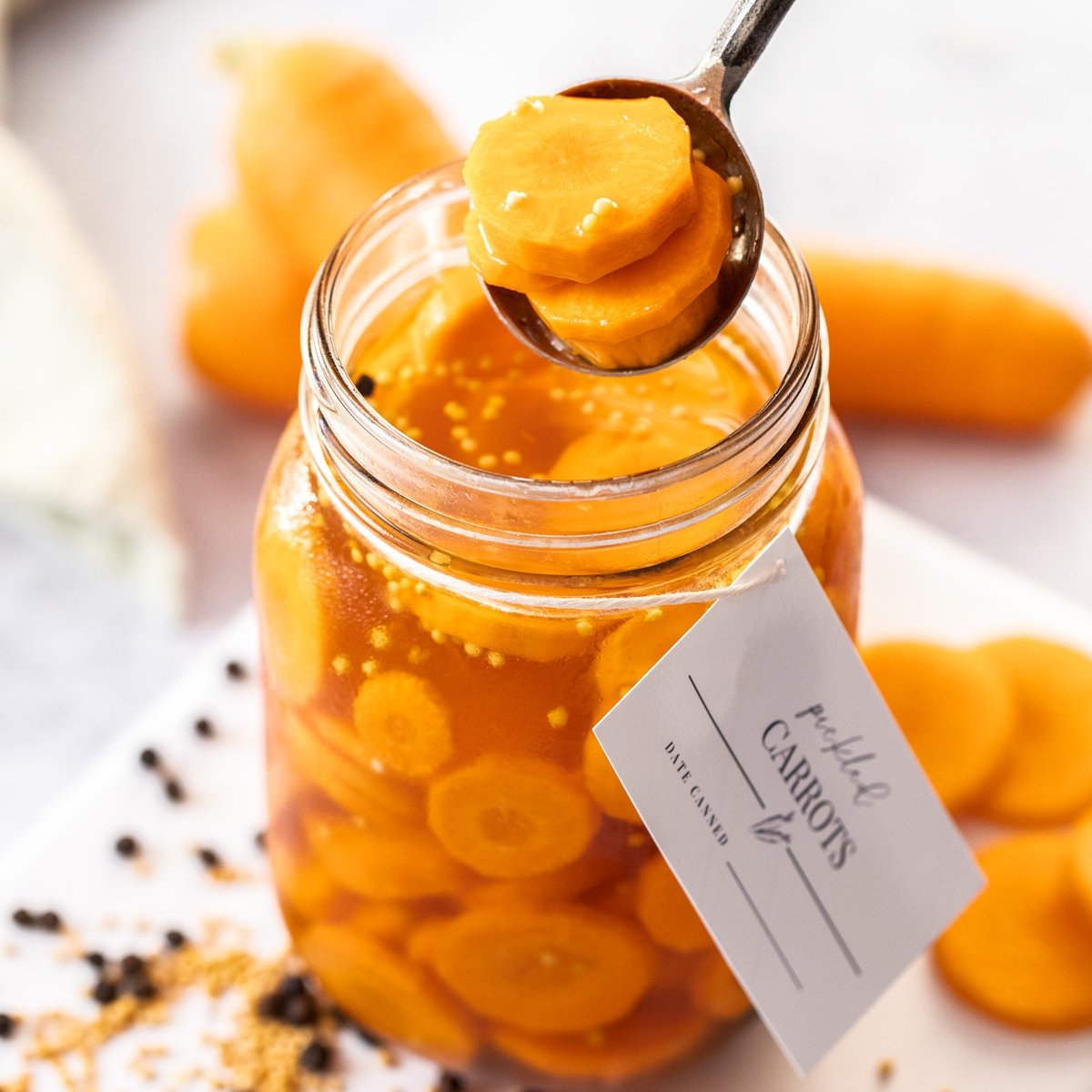
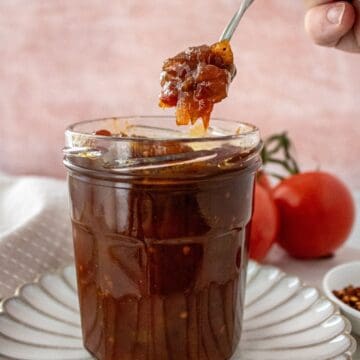
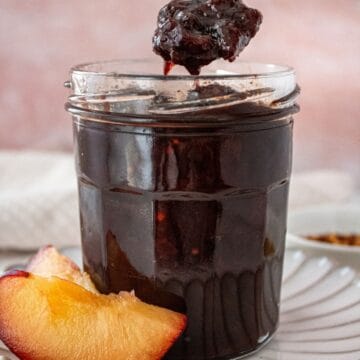
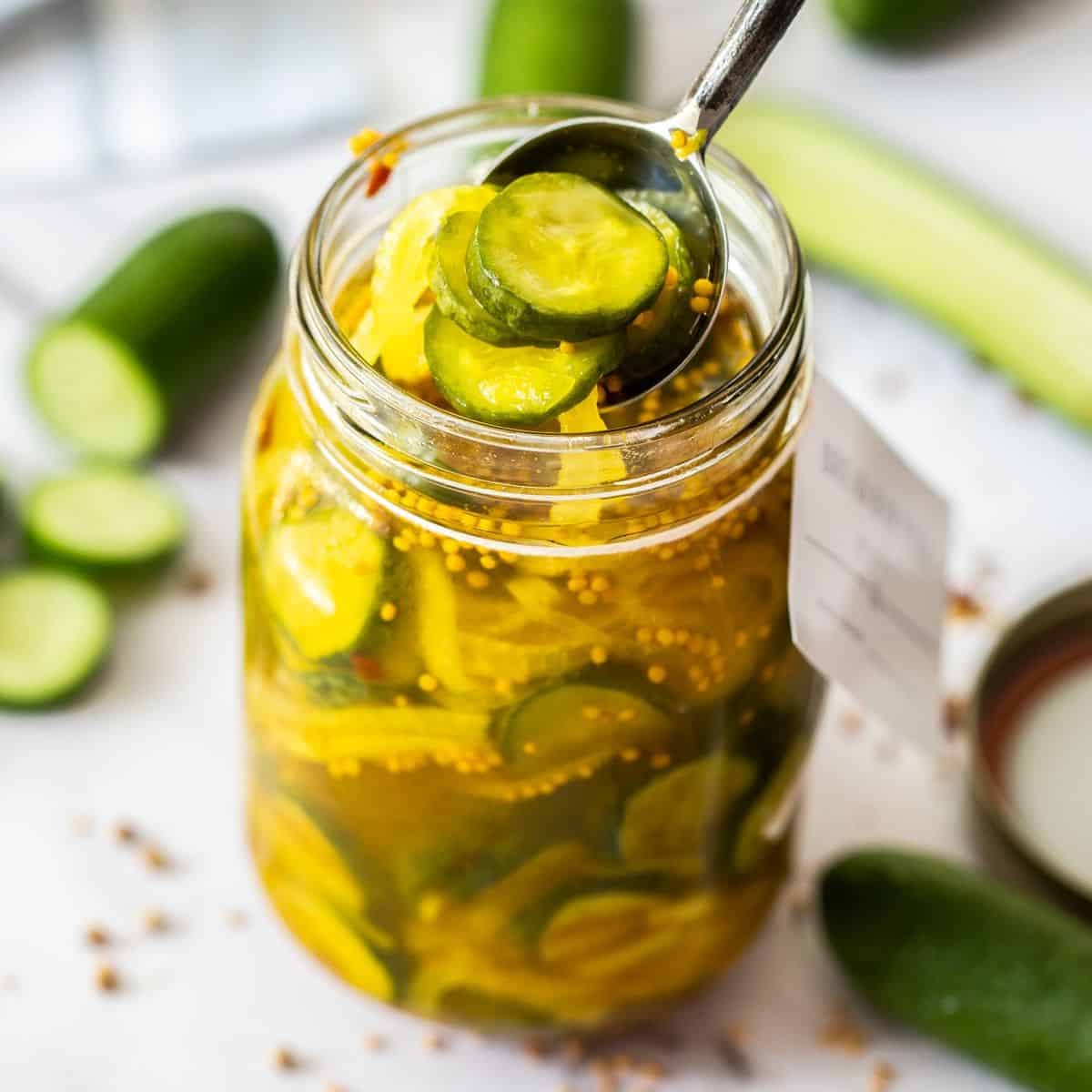
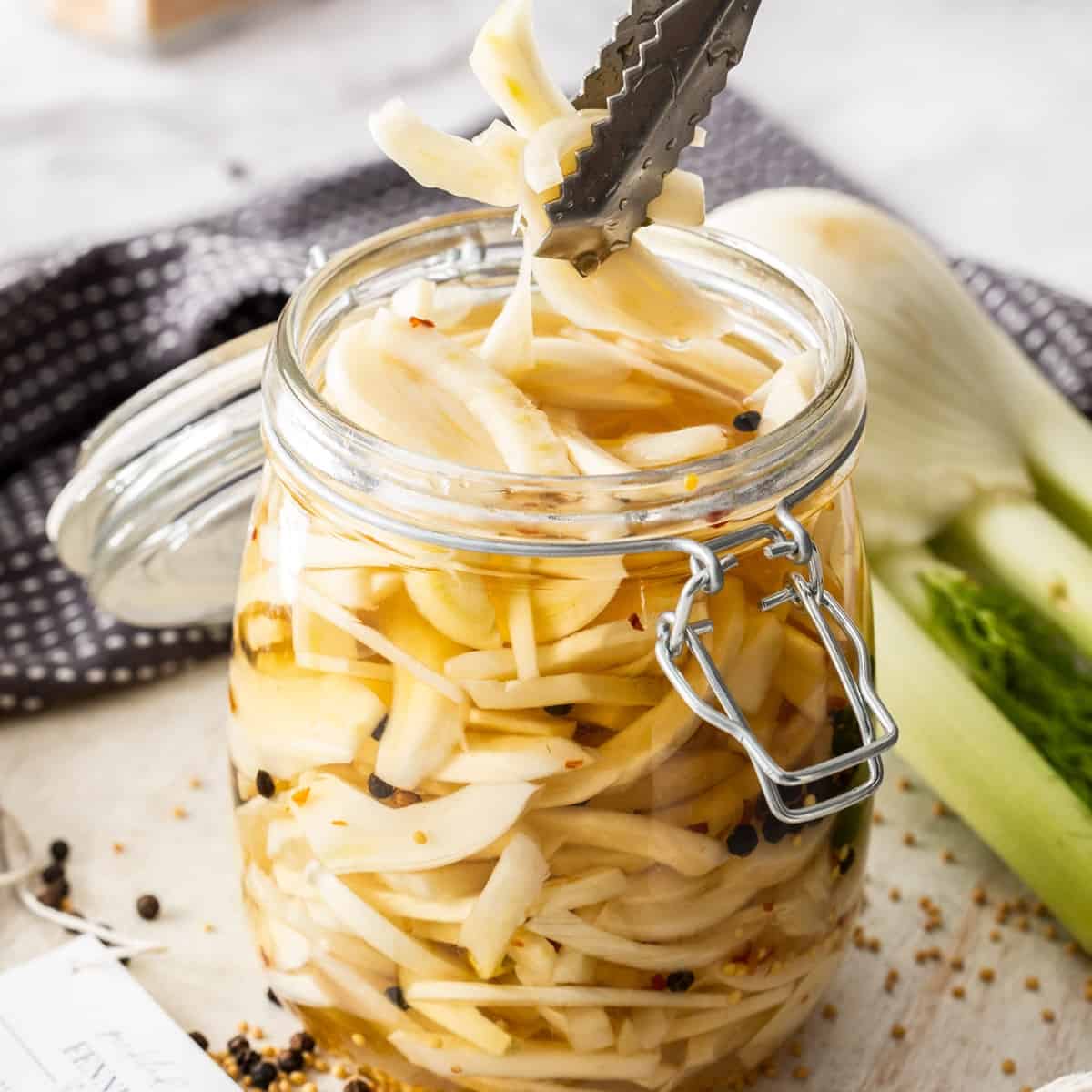
mark slack says
sounds simplistic and good, I will try but boil or microwave the beetroot which on this occasion is rather large. thankyou Mark.
Alexandra Cook says
Please let me know how you get on, Mark!
Alex xo
John says
when to add the beetroot slices seems to have been lost in your recipe. 4. 5.? please help
Alexandra Cook says
Hi John,
We note this in step four under "For the Pickled Beetroot":
4. Add the beetroot slices into the warm, sterilised jar.
Alex xo
kelsie says
love this recipe
Thanks for the help
Alexandra Cook says
Thank you, Kelsie 🙂
Alex xo
Denise Bird says
With the current beetroot shortage and me missing my canned beetroot, I decided to try this recipe. Wow! Absolutely delicious and so easy to make. Thank you so much for sharing this recipe Alex.
Alexandra Cook says
Hello Denise,
Thank you so much for giving this recipe a try!
I am happy that you enjoyed it so much, and really appreciate you taking the time to let me know 🙂
Alex xo
Gloria Bye says
Hi Denise, I’ll bet you never buy tinned beetroot again after making your own!
Enjoy!
Cheers,
Gloria
Marie says
Great recipe! We always have a jar of beetroot on the go - this will be our go to now.
Alexandra Cook says
I am so pleased this will now be your go to recipe 🙂
Thanks so much! Alex xo